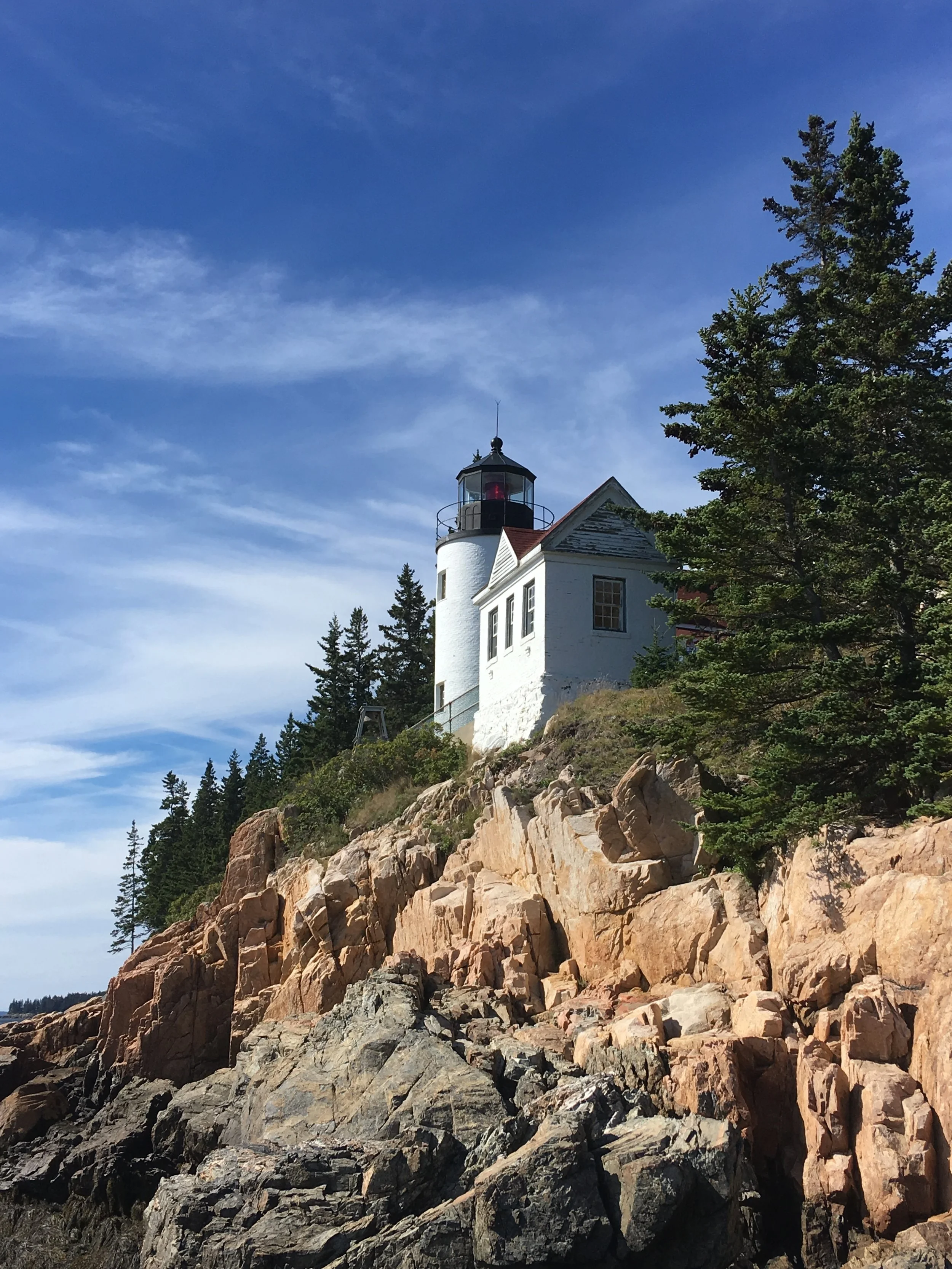Early in the twentieth century, artist Russell Porter planned to start an art colony on a 50-acre plot of land adjacent to our lighthouse property called “Land’s End.” The colony failed to materialize but the stone pillars erected at its entrance still stand (pictured above) and we drive through them every day on our journey to and from our home at the light keeper’s cottage. I like to think of them as gateways to our own art colony, whereupon entering we aim to cast our cares aside.
And with the advent of summer here, I am reminded how spectacular the season is in Maine and how very blessed we are to live here. Linda and I half-jokingly remark that if we had known how special summers are we would have moved here years ago. In a sense, summer is what makes the winters livable for us. As one old timer said, “If you can’t endure the winter, you don’t deserve the summer.” So, I guess we earned our good weather for another year!
After escaping the sweltering heat and humidity of Florida (which friends and family inform us has only gotten worse), we love living where air conditioning is not a necessity and sea breezes usually suffice as substitutes. All of which is to say that literally living where the land ends makes us mindful of the beauty that surrounds us, motivates us to share it with others, and moves us to exercise our creative gifts.
I love a quote attributed to Edward O. Wilson: “The crucial first step to survival in all organisms is habitat selection. If you get to the right place, everything else is likely to be easier.” I cannot speak for others but as for us, the power of place has proven instrumental to living a life of fulfillment and fun. Once we find a place that feeds our souls we are in a position to grow as people and pursue our passions. So, here is to living life to its fullest wherever we call home!







